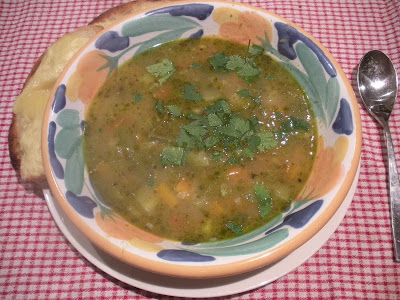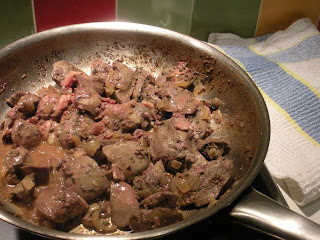The Kitchen Daughter is the debut novel of Jael McHenry, a columnist and home cook who lives in New York. Her novel is a clever and subtle story that leads you by the nose like the tendrils of fragrant cooking smells, to explore the story's characters and their connections to loved ones, memories and their place in the world.
The story unfolds with the untimely death of two loving and protective parents and how the changed circumstances impact on their two adult daughters - Ginny and Amanda.
The story is told through the eyes of Ginny, an attractive 20-something daughter who has Asperger's Syndrome - which is part of the spectrum of autism.
The author rises to the challenge to capture the "voice" of Ginny and the social awkwardness, the difficulty to read social cues, the inability to feel empathy, as well how she responds in the literal sense only - which is typical of those with Asperger's.
I suspect this is why the prose is fashioned to be short and abrupt. Perhaps the aim is to capture the expression and mindset, or the type of mindset and thought processes we are told are typical of Asperger's. As we engage with Ginny we also gain insight in to ourselves and how we react in turn to what we consider to be normal.
Ginny describes herself as having a "personality" which is a warm way for the author to explain her main character to us.
The next challenge the author faced was creating situations and settings to show Ginny interacting with other characters within the story to exemplify how things can be construed and misconstrued by not only those with Asperger's, but also by those who interact with them.
Ginny is called the Kitchen Daughter, as true to form, she has focused on a particular interest and skill set (in this case cooking) which is typical of Asperger's. The cutting and dicing highlights her repetitive behaviours. Ginny is also depicted withdrawing from stressful situations in unusual ways.
But this is not a story about Asperger's.
It is the story about a young woman, who through her interest in cooking, discovers her power to conjure up ghosts with the aroma of food. The ghosts she speaks to are no ordinary ghosts. They are the owners of handwritten recipes. The first to appear to Ginny is Nonna, her grandmother, enticed by her redolent Ribollita recipe.
It is her warning: "Don't let Amanda..." that drives the story and prods Ginny to discover family secrets, piecing together scraps of information devulged by ghosts awakened by Bread Soup, Georgia Peach, Midnight City Brownies, Biscuits and Gravy, home made play-doh, Aji de Gallina, boiled eggs and spicy hot chocolate.
Don't let Amanda..." What ?
1. Not sell the family home ?
2. Not put a name on Ginny and thereby label her?
3. Fail to provide early intervention for her daughter Shannon, whom Ginny fears is just like her?
Several threads connect and interconnect, their fragrances intermingle and tantalize and keep the reader guessing.
The role of food in this novel is multi-layered.
It is shown as a gift:
"This time we drop off the dishes without going inside. Our food pays the visit on our behalf." p185
As an observance:
"We are here because it is the day of the funeral. The family, they do not cook this day. We serve them instead. It is called seudat havra'h. Meal of consolation." p149
As an identity:
"The word normal is inclusive. Maybe I can live in the world, and be who I want to be after all." p196
As a comfort:
"I feel better if I cook. Something that will completely absorb me, push everything else out of my mind". p244
Midnight City Brownies
125g butter
1/2 cup cocoa
1 Tblspn expresso coffee
3 eggs
1 cup raw sugar
1 tsp vanilla
1/2 cup flour
1/2 tsp coarse salt
Method
Preheat oven 350 degrees. Melt butter and stir in cocoa and expreso powder. Let cool. In a larger bowl, beat eggs until pale yellow. Add butter mixture. Stir in vanilla and flour until combined. Pour in to a brownie pan lined with lightly oiled foil. Sprinkle salt on top. Bake 30-35 minutes or until skewer comes out clean.
And with chocolate ganache (because I wanted to).
FYI: No reported ghostly sightings accompanied this recipe.
©2011 My Novel Idea Ann Etcell-Ly/All Rights Reserved































